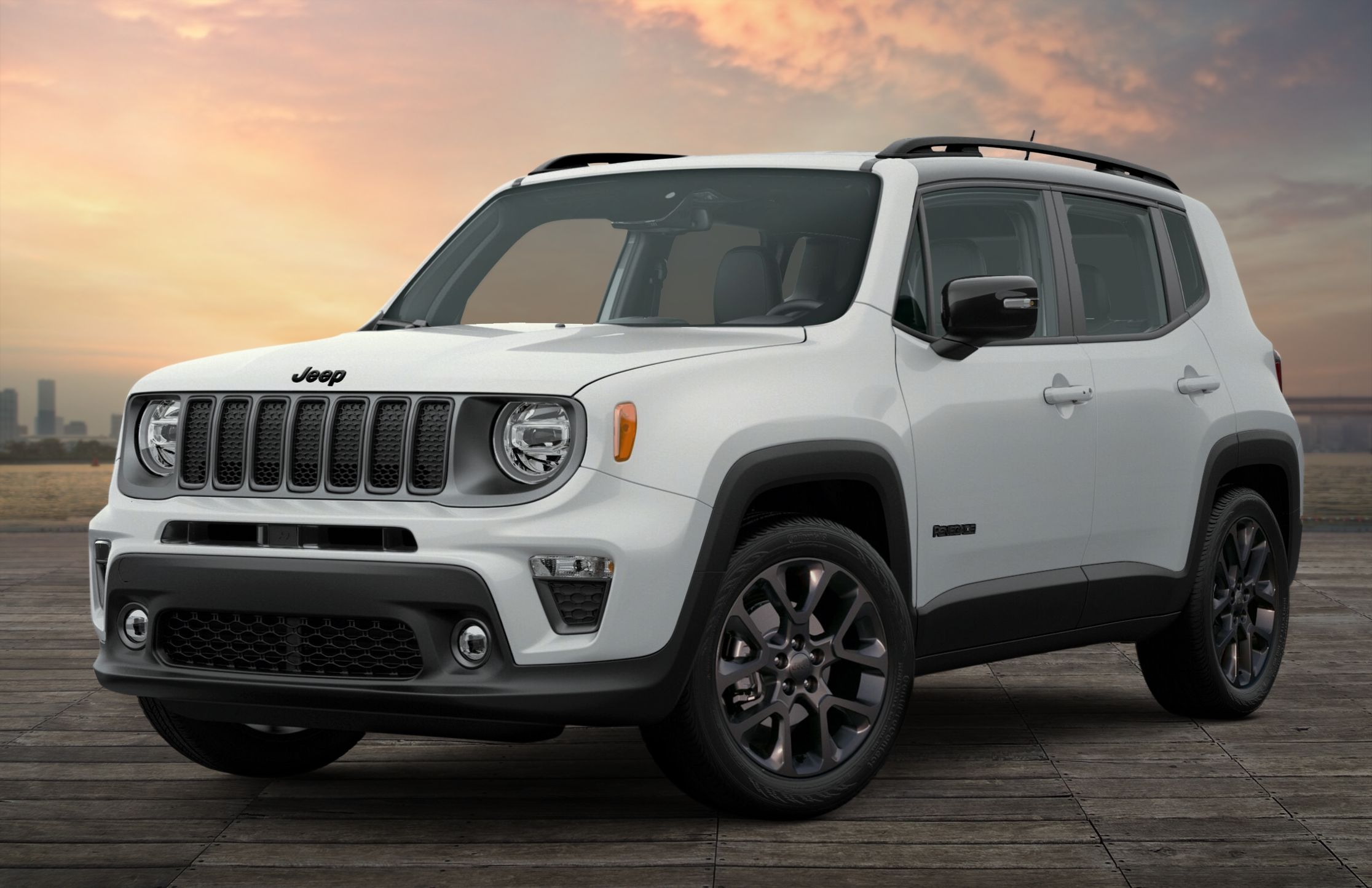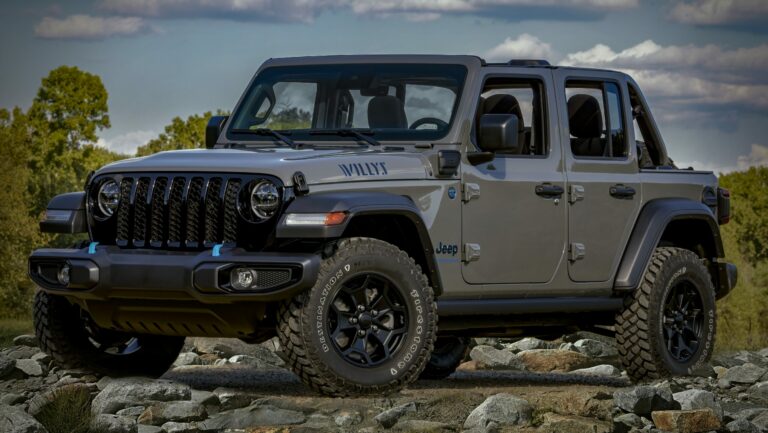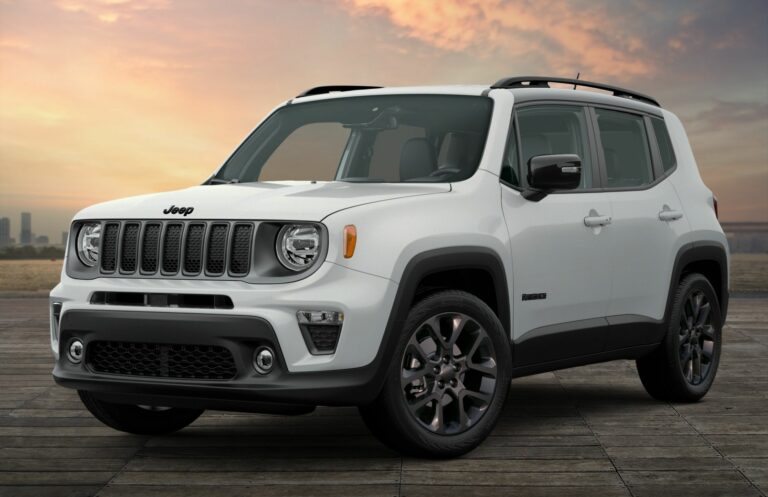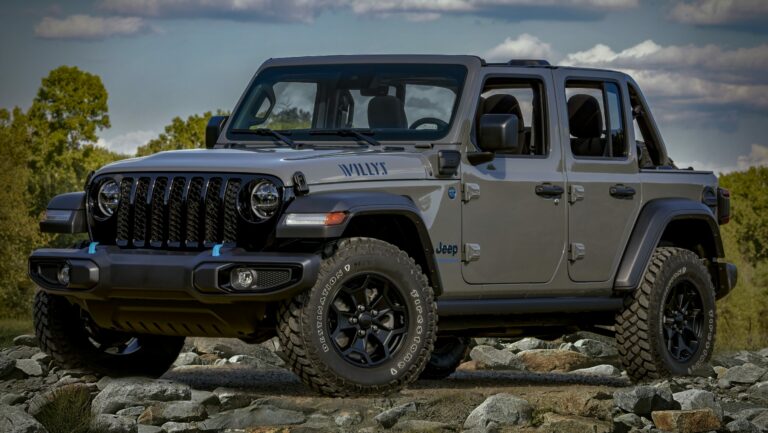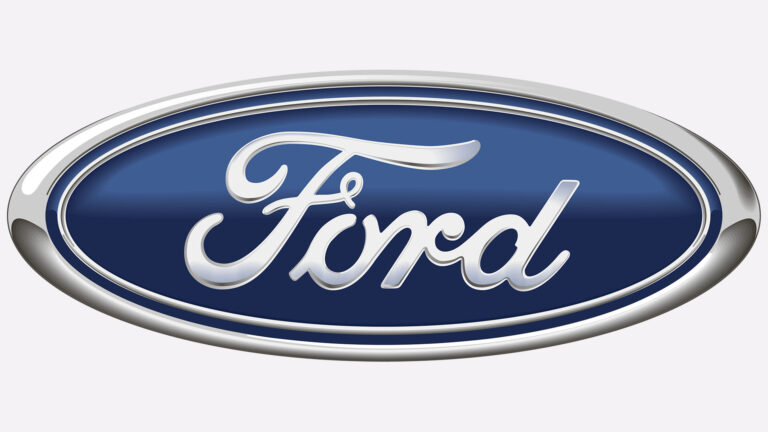Jeep XJ Dana 44 For Sale: Your Ultimate Guide to a Legendary Upgrade
Jeep XJ Dana 44 For Sale: Your Ultimate Guide to a Legendary Upgrade jeeps.truckstrend.com
The Jeep Cherokee XJ, an icon of rugged simplicity and off-road prowess, holds a special place in the hearts of automotive enthusiasts. Its unibody construction, solid axles, and inline-six engine make it a formidable platform for adventure. However, for those pushing the limits of their XJ, particularly with larger tires and more challenging trails, the factory Dana 35 rear axle often becomes a significant weak point. This is where the allure of the Jeep XJ Dana 44 For Sale enters the picture – not as a common factory option, but as the holy grail of rear axle upgrades, promising unparalleled strength and peace of mind.
This comprehensive guide delves into everything you need to know about acquiring a Dana 44 axle for your XJ. We’ll explore why it’s such a coveted upgrade, where to find one, what to look for, and the practicalities of integrating it into your beloved Cherokee. Whether you’re a seasoned fabricator or a novice enthusiast contemplating a major driveline enhancement, understanding the ins and outs of the Jeep XJ Dana 44 market is crucial for a successful transformation.
Jeep XJ Dana 44 For Sale: Your Ultimate Guide to a Legendary Upgrade
Why Upgrade to a Dana 44 for Your XJ? The Quest for Unbreakable Performance
For many Jeep XJ owners, the question isn’t if they’ll break a Dana 35, but when. The Dana 35, standard on most XJs, is notoriously fragile when subjected to larger tires (33 inches and above), aggressive off-road driving, or the added stress of lockers. Its smaller ring and pinion, weaker axle shafts, and C-clip retention system make it susceptible to failure, leaving you stranded on the trail.
Enter the Dana 44. This axle boasts a larger ring and pinion gear, stronger axle shafts (often 30-spline compared to the Dana 35’s 27-spline), and a more robust housing. The benefits are numerous and compelling:
- Superior Strength: The primary reason for the swap. A Dana 44 can reliably handle larger tires (35-37 inches with proper shaft upgrades) and the rigors of serious off-roading, including rock crawling and heavy articulation.
- Enhanced Durability: Less prone to bending or breaking under stress, ensuring a more reliable and enjoyable off-road experience.
- Greater Aftermarket Support: A vast array of aftermarket parts, including lockers, stronger shafts, and different gear ratios, are available for the Dana 44, allowing for extensive customization and future upgrades.
- Increased Resale Value: A properly executed Dana 44 swap can significantly increase the value and desirability of your XJ.
- Peace of Mind: Knowing your rear axle can withstand the demands you place on it allows for more confident and aggressive driving on challenging terrain.

While a Dana 44 was a rare factory option on some early XJs (primarily the 1987-1989 models, usually paired with the tow package or manual transmission), most Jeep XJ Dana 44 For Sale listings refer to axles sourced from other vehicles and adapted for XJ use.
Understanding the XJ Dana 44: Origins and Variations for Your Swap
The "Jeep XJ Dana 44" you’re looking for is usually not directly out of another XJ, unless you’re lucky enough to find one of the rare factory units. More commonly, enthusiasts source Dana 44s from other Jeep models or even other brands, then modify them to fit the XJ. Understanding these variations is key to a successful swap:
- Factory XJ Dana 44 (Rare): Found in some 1987-1989 XJs. These are a direct bolt-in for the XJ and come with the correct width, spring perches, and shock mounts. They typically have 30-spline shafts and drum brakes. These are the most desirable for ease of installation but are incredibly hard to find.
- Jeep Grand Cherokee ZJ Dana 44a (Aluminum Housing): While a Dana 44, the "a" signifies an aluminum housing, which is lighter but not as strong as the cast iron Dana 44s for heavy off-roading. It also has a unique differential and limited aftermarket support. Generally, not recommended for serious XJ builds.
- Jeep JK Rubicon Dana 44: These are modern, robust Dana 44s with disc brakes, 30-spline shafts, and often electronic lockers (Tru-Lok). They are significantly wider than the XJ’s factory axle and require substantial modification (shortening, new mounts, custom driveshaft) but offer excellent strength and modern features.
- Jeep Wagoneer (FSJ) Dana 44: Full-size Jeep Wagoneers (1980s) often came with Dana 44s. These are wide and require shortening and custom mounts for an XJ. They are known for their strength and often come with disc brakes.
- Ford 8.8 Inch Axle: While not a Dana 44, the Ford 8.8 from Explorers (1995-2001) is a very popular alternative to the Dana 44 for XJ swaps. It’s strong, readily available, comes with disc brakes, and often has limited-slip differentials. It requires similar modifications to a non-XJ Dana 44 (new perches, shock mounts, sometimes driveshaft work). Many consider it a superior option due to availability and cost.
When looking for a Jeep XJ Dana 44 For Sale, you’ll primarily be dealing with the rare factory XJ Dana 44s or un-modified Dana 44s from other vehicles that can be adapted.
What to Look For When Buying a Jeep XJ Dana 44
Acquiring a used Dana 44 requires a keen eye and careful inspection. A thorough evaluation can save you significant time, money, and headaches down the road. Here’s a checklist of critical points:
- Axle Housing Straightness: This is paramount. A bent axle housing is almost impossible to correct properly. Look down the axle tubes from each end to check for any visible bends or warps. A reputable seller might offer a measurement.
- Rust and Corrosion: While surface rust is common and easily addressed, deep pitting or structural rust can compromise the axle’s integrity, especially around welds and mounting points.
- Gear Ratio: Confirm the gear ratio. It’s usually stamped on the ring gear or a tag on the differential cover. Ensure it matches your front axle’s ratio or plan to re-gear both. Common ratios are 3.55, 3.73, 4.10, etc.
- Differential Type: Is it an open differential, limited-slip, or a locker? Verify its functionality if it’s not an open diff.
- Axle Shafts: Inspect for straightness, spline damage, and excessive wear on the bearing surfaces. Aftermarket shafts are a bonus.
- Brakes: Note if it has drum or disc brakes. If disc, check rotor thickness and caliper condition. If drum, check drum wear and shoe condition. Assume you’ll need new pads/shoes and possibly rotors/drums regardless.
- Bearing Play: Check for excessive play in the wheel bearings by trying to wiggle the wheel flange up and down.
- Mounting Points: If it’s a factory XJ Dana 44, ensure the spring perches, shock mounts, and control arm mounts are intact and in good condition. If it’s from another vehicle, these will likely need to be cut off and new XJ-specific mounts welded on.
- Pinion Yoke: Check for play in the pinion bearing by trying to wiggle the yoke. Also, note the type of yoke (U-bolt style or strap style) and its U-joint size.
- Seller Reputation: Buy from reputable sellers, ideally those who understand what they’re selling. Ask questions, request detailed photos, and if possible, inspect in person.
Installation Considerations and Challenges of the Dana 44 Swap
Swapping a Dana 44 into your XJ is not a direct bolt-in operation unless you find a rare factory XJ Dana 44. Even then, an older axle may require new seals, bearings, and possibly a brake overhaul. For axles sourced from other vehicles, the complexity increases significantly.
- Width Matching: The biggest hurdle is axle width. Most donor Dana 44s are wider than the XJ’s stock axle, requiring shortening of the long side axle tube and a custom-length axle shaft. This is a specialized job usually performed by an experienced fabricator or machine shop.
- Mount Fabrication: Spring perches, shock mounts, track bar mount, and control arm mounts will need to be cut off the donor axle and new XJ-specific mounts welded in their place. Precision in placement is critical for proper suspension geometry and alignment.
- Driveshaft Modifications: The pinion yoke may differ, requiring a new U-joint or a custom driveshaft. Driveshaft length will also need to be adjusted based on the new axle’s position relative to the transfer case output.
- Brake System Integration: If swapping from drum to disc brakes (common with non-XJ Dana 44s), you’ll need to run new hard lines, flexible lines, and potentially adapt the parking brake cable.
- Gearing Matching: It is absolutely critical that the rear axle’s gear ratio matches the front axle’s ratio. Failure to do so will result in severe drivetrain binding and damage, especially when engaging 4WD.
- ABS and Speed Sensors: If your XJ has ABS, integrating the speed sensor from the new axle or finding an alternative solution (e.g., transfer case speed sensor) will be necessary.
- DIY vs. Professional: While some experienced home mechanics can tackle this, the welding, measuring, and fabrication involved make it a project often best left to professional off-road shops or fabricators. Incorrect welding or geometry can lead to dangerous handling characteristics or premature component failure.
Cost Analysis and Value Proposition of the Dana 44 Swap
The cost of a Jeep XJ Dana 44 For Sale and its subsequent installation can vary wildly, making budgeting a crucial first step.
- Axle Purchase:
- Bare housing: $200 – $600 (from junkyard, needing full rebuild)
- Complete stock axle (used): $400 – $1,500 (depending on condition, rare factory XJ D44s can fetch higher prices)
- Aftermarket "built" axle: $2,500 – $5,000+ (new housing, shafts, locker, gears, disc brakes, ready to install)
- Parts & Materials (if building from a bare housing):
- Gears & Install Kit: $300 – $500
- Locker/LSD: $300 – $1,000+
- Axle Shafts: $200 – $600 (aftermarket chromoly can be $500-$1000+)
- Bearings & Seals: $100 – $200
- Brake Components: $200 – $500 (rotors, calipers, pads/shoes, lines)
- Mounts (welding tabs, perches): $100 – $300
- Driveshaft Modification: $150 – $400
- Labor (if professional installation):
- Shortening axle: $200 – $500
- Welding mounts: $400 – $800+
- Gear setup: $200 – $400
- Overall installation: $800 – $2,000+ (highly dependent on shop rates and complexity)
The value proposition lies in the enhanced capability and reliability of your XJ. While the initial outlay can be significant, avoiding trail breakdowns, costly recovery fees, and the frustration of repeated Dana 35 failures often justifies the investment. It transforms your XJ from a capable stocker to a truly robust off-road machine.
Finding a Jeep XJ Dana 44 For Sale: Where to Look
The hunt for a Jeep XJ Dana 44 For Sale can be a treasure hunt. Here are the most common places to find them:
- Online Forums & Classifieds: Dedicated Jeep forums (e.g., CherokeeForum.com, NAXJA.org), local Craigslist, Facebook Marketplace, and specialized off-road classifieds are prime hunting grounds. Set up alerts for "Dana 44 XJ" or "XJ axle swap."
- Junkyards/Salvage Yards: Old full-size Jeeps (Wagoneers, J-trucks), certain Ford Explorers (for the 8.8 alternative), and very rarely, the factory XJ Dana 44s can be found here. Be prepared to pull the axle yourself and inspect thoroughly.
- Specialized Off-Road Shops: Many shops that cater to Jeep modifications will either have used axles in stock or can source and even build one for you. This is often the most expensive route but ensures quality and proper setup.
- Social Media Groups: Facebook groups dedicated to Jeep XJ owners or local 4×4 communities often have members selling parts.
- Word of Mouth: Let your local Jeep club or off-road friends know you’re looking. Sometimes the best deals come from within the community.
Tips for a Successful Purchase and Installation
- Research Thoroughly: Understand the different Dana 44 variants and their compatibility before you start looking.
- Set a Realistic Budget: Factor in not just the axle cost, but also new parts (seals, bearings, brakes), potential gear sets, and labor if you’re not doing it all yourself.
- Verify Everything: If buying used, confirm the gear ratio, spline count, and overall condition. Ask for pictures and detailed descriptions.
- Measure Twice, Weld Once: If fabricating mounts, precise measurements are non-negotiable for proper suspension geometry.
- Don’t Skimp on Gearing: Always re-gear both axles to match. This is non-negotiable for 4WD operation.
- Consider Aftermarket Options: If a used Dana 44 proves too difficult or costly to source and build, a brand new aftermarket Dana 44 (or a Ford 8.8 built specifically for XJ swaps) might be a more straightforward, albeit more expensive, solution.
- Seek Professional Help: If you’re unsure about any aspect of the swap, especially welding or gear setup, consult or hire a professional. Safety and proper functionality are paramount.
Jeep XJ Dana 44 For Sale: Estimated Price Table
Prices are highly variable based on condition, location, seller, and included components. These are rough estimates for the used market and new aftermarket options.
| Axle Type/Configuration | Condition | Estimated Price Range (USD) | Key Features/Notes |
|---|---|---|---|
| Factory XJ Dana 44 | Used – Fair | $400 – $800 | Rare, drum brakes, 30-spline, direct bolt-in for ’87-’89 XJ. May need full rebuild. |
| Used – Good | $800 – $1,500 | Rare, better condition, less common to find complete. Still likely needs fresh seals/bearings. | |
| Donor Dana 44 (e.g., Wagoneer) | Used – Bare Housing | $200 – $500 | Requires full rebuild, shortening, new mounts, shafts, gears, brakes. Significant fabrication needed. |
| Used – Complete | $400 – $800 | Includes gears, shafts. Still requires major modification for XJ fitment. Condition varies widely. | |
| Ford 8.8 (Explorer) | Used – Complete | $200 – $500 | Very popular alternative. Disc brakes, sometimes LSD. Requires new mounts, driveshaft, minor shortening often. |
| Rebuilt/Ready for Swap | $800 – $1,500 | Professionally rebuilt, possibly with new gears/LSD, but still requires XJ-specific mounts to be welded. | |
| Aftermarket Dana 44 (XJ Specific) | New – Bare Housing | $1,000 – $1,800 | Brand new housing designed for XJ swap. Requires all internal components (gears, shafts, locker, brakes). |
| New – Complete "Built" | $2,500 – $5,000+ | Fully assembled with new gears, chromoly shafts, locker, disc brakes. Bolt-in (after custom driveshaft) for XJ. |
Frequently Asked Questions (FAQ) about Jeep XJ Dana 44 For Sale
Q1: Is a Dana 44 a direct bolt-in for my Jeep XJ?
A1: Only if you find one of the rare factory Dana 44s from a 1987-1989 XJ/MJ. Most other Dana 44s (from JKs, Wagoneers, etc.) are wider and require significant fabrication, including shortening the axle, cutting off old mounts, and welding on new XJ-specific mounts.
Q2: What’s the best Dana 44 to use for an XJ swap?
A2: The "best" depends on your budget and fabrication skills. The factory XJ Dana 44 is easiest to install but hard to find. For a balance of strength, availability, and cost, many opt for a Ford 8.8 from a 1995-2001 Explorer, which is not a Dana 44 but offers comparable strength and disc brakes. If you want a true Dana 44 and are willing to pay for fabrication, a JK Rubicon Dana 44 is very strong, but requires extensive modification.
Q3: How much does a Dana 44 swap typically cost?
A3: The total cost can range from $1,000 (if you find a cheap donor and do all the work yourself) to $5,000+ (for a professionally built, new aftermarket axle with all the bells and whistles). Factors include the condition of the donor axle, new parts needed (gears, locker, shafts, brakes), and professional labor fees.
Q4: Do I need to re-gear my front axle too after swapping to a Dana 44 rear?
A4: Yes, absolutely. Your front and rear axle gear ratios must match perfectly to avoid severe drivetrain damage, especially when using 4WD. If your new Dana 44 has a different ratio than your front axle, you will need to re-gear both axles to the desired ratio.
Q5: Can I run 35-inch tires with a stock Dana 44?
A5: A stock Dana 44 is generally strong enough for 35-inch tires, especially if you’re not doing extreme rock crawling. However, for serious off-roading, upgrading to chromoly axle shafts is highly recommended to prevent breaks. For 37-inch tires and larger, further reinforcement and possibly a larger axle (like a Dana 60) might be considered.
Q6: What are common issues with used Dana 44s?
A6: Common issues include bent axle housings, worn-out bearings and seals, pitted or incorrect gear ratios, and damaged brake components. Always inspect thoroughly before purchasing.
Conclusion: The Unbeatable Value of a Dana 44 in Your XJ
The pursuit of a Jeep XJ Dana 44 For Sale is more than just buying a part; it’s an investment in your vehicle’s capability, reliability, and longevity on the trail. While the journey from finding the right axle to completing the swap can be challenging, the rewards are undeniable. You transform your XJ from a weekend warrior with a potential Achilles’ heel into a true off-road beast, ready to tackle obstacles with confidence.
By understanding the origins, variations, critical inspection points, and installation considerations, you empower yourself to make informed decisions. Whether you opt for the rare factory unit, adapt a donor axle, or invest in a purpose-built aftermarket solution, the Dana 44 upgrade is a testament to your commitment to the Jeep XJ legacy. It’s an upgrade that pays dividends in performance, durability, and the sheer joy of conquering the toughest terrain. So, embark on your search with knowledge and enthusiasm, and prepare to unlock the full potential of your legendary Jeep Cherokee XJ.
